At Computex 2019, Intel Ice Lake is making its debut. This is Intel’s first major microarchitecture reboot since Skylake. This new 10nm generation we offered a performance preview of a few days ago in Intel Computex 2019 Preview 5GHz All Core i9-9900KS and Ice Lake. Today we get to share more details on the new Ice Lake CPUs along with the Sunnycove microarchitecture.
Ice Lake Becomes Intel 10th Generation Core
Intel shared a view of almost a decade and a half of microarchitectures. You can see what had been a ~2-3 year cadence stretch to four with Ice Lake. This has been coming for some time. One interesting note is that it is also coming with a new badging without Intel blue for the first time.
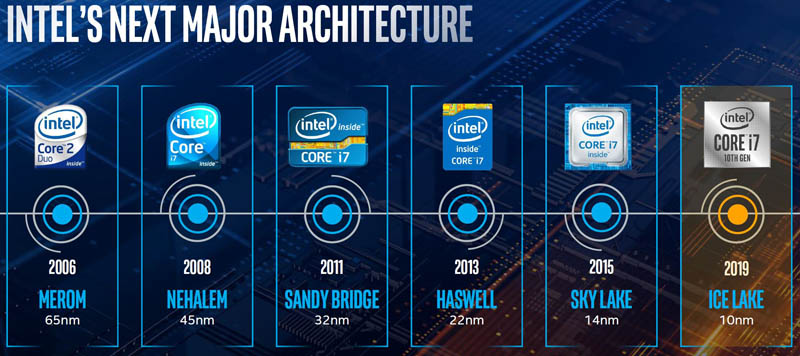
Here is the summary slide of Ice Lake’s improvements beyond straight IPC gains. Intel is adding VNNI DL Boost for edge inferencing acceleration, along with Dynamic Tuning 2.0 to manage clock speeds. Thunderbolt 3 is now more tightly integrated which makes the external ports more versatile. WiFi 6 will increase wifi speeds especially in congested environments over 802.11ac using new modules. On the video side, there is faster HEVC encoding and a more powerful GPU that allows some esports type titles to be played on notebooks with integrated graphics.
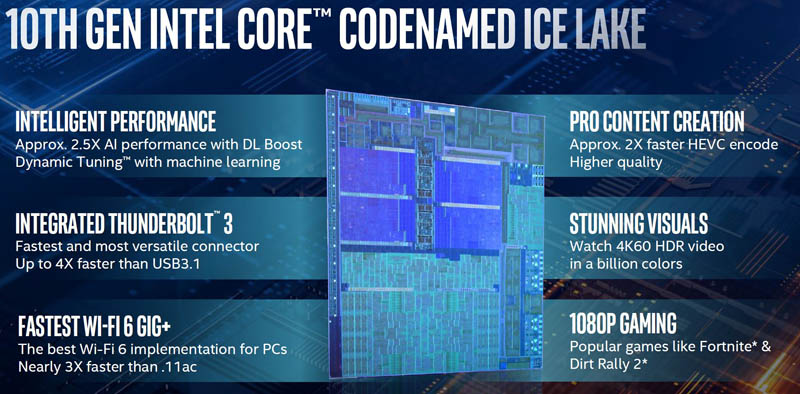
There are predictably Core i3, Core i5, and Core i7 chips. We wanted to take a pause here on the TDP. One can see 9W, 15W, and 28W listed. If you go back to our preview, you will see a 25W TDP part tested. We were told that there may be a 25W part in the future. Memory speeds are also increasing with this generation which will help feed the integrated graphics.
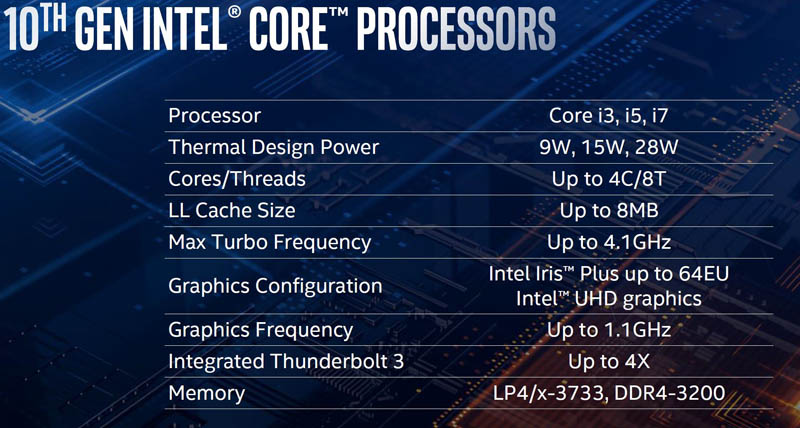
Looking at the CPU, we still have 4 core/ 8 thread designs. We are going to look at the Sunnycove microarchitecture in the next section. The new Intel Gen11 graphics is touted as a 1TFLOP solution with up to 64 EUs. Predictably we are seeing an increase in media encoders, display pipes, and the image processing unit which get better with each generation.
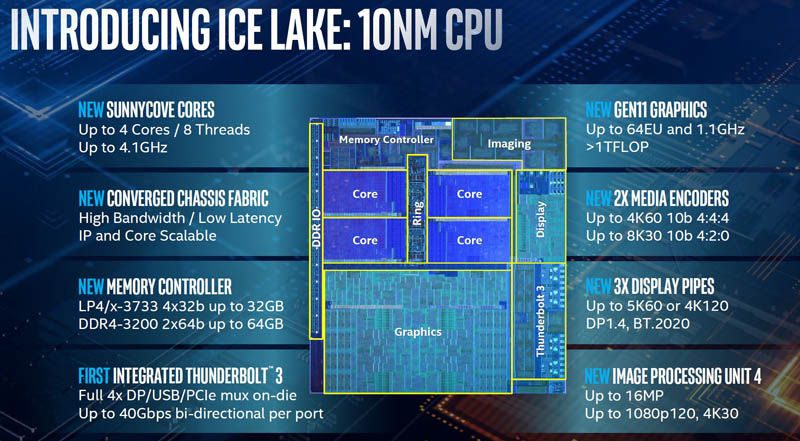
One item that may interest our readers is Intel Dynamic Tuning 2.0. Like many features, the machine learning buzzword is being added. An impact of Intel Dynamic Tuning 2.0 is Ice Lake can have more fine-grained control of when to use additional thermal and power headroom which can extend the amount of time in a boost state.
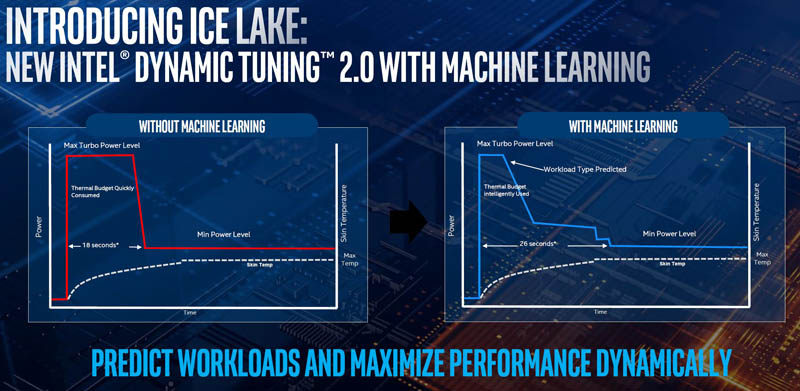
From a packaging perspective, Ice Lake has a 15W Type3 and a 9W Type 4 package and a new thin magnetic inductor array. The new generation is also integrating more Thunderbolt components as well as power delivery. This should make for thinner notebooks or notebooks with more room for batteries. It should also help make smaller NUCs potentially with more Thunderbolt 3 connectivity for things like 10/25GbE NICs.
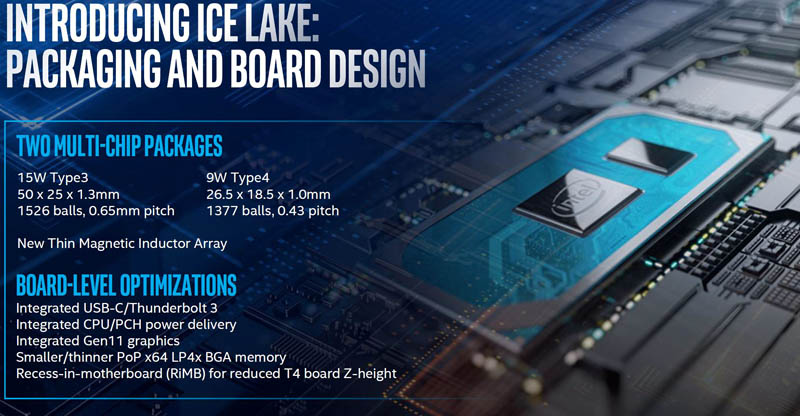
The Intel Ice Lake PCH is a 14nm part that has Wi-Fi 6 CNVi 2 integrated, and more USB. Interestingly, the slide says only three SATA 6Gbps ports. In a notebook, three SATA ports is overkill, but it is showing the trend toward NVMe that will accelerate with this generation.
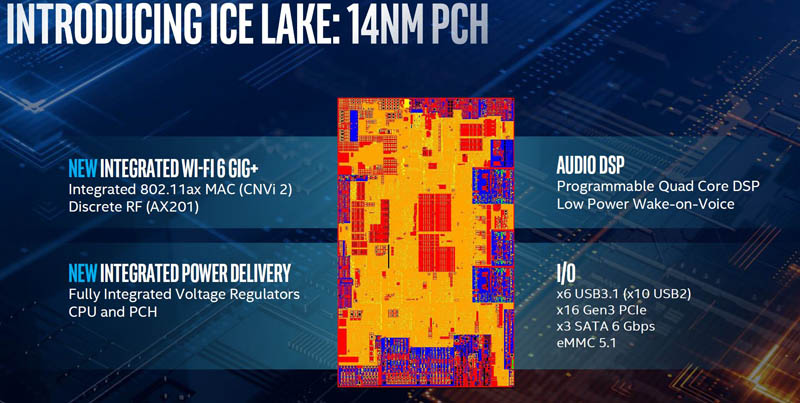
FIVR also helps increase integration leading to smaller motherboard sizes.
Next, we wanted to tough on the new Intel Sunnycove microarchitecture.
Intel Sunnycove Microarchitecture
We had a more detailed piece on this after Intel Architecture Day 2018 that you may have seen. Features of the new Sunnycove microarchitecture increase the amount of work that can be done per clock cycle. Intel is also increasing key features like caches to help keep pipelines fed.
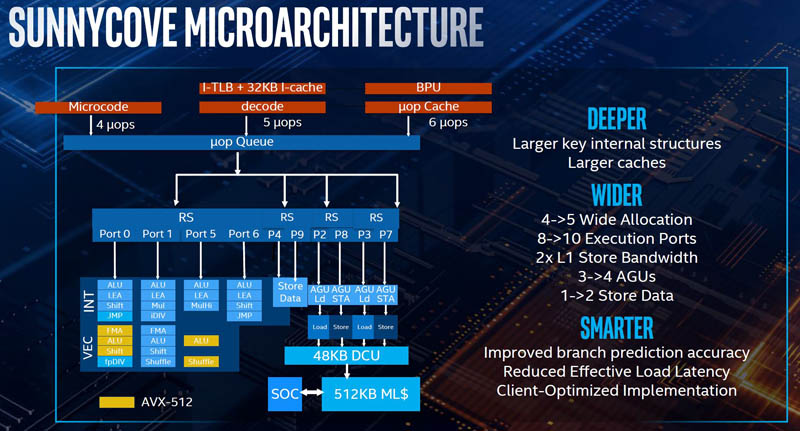
Here is the Intel overview of Ice Lake’s Sunnycove microarchitecture changes and comparison to the 2013 and 2015 generations. Intel, as they often do, are also adding a number of new capabilities in this generation.
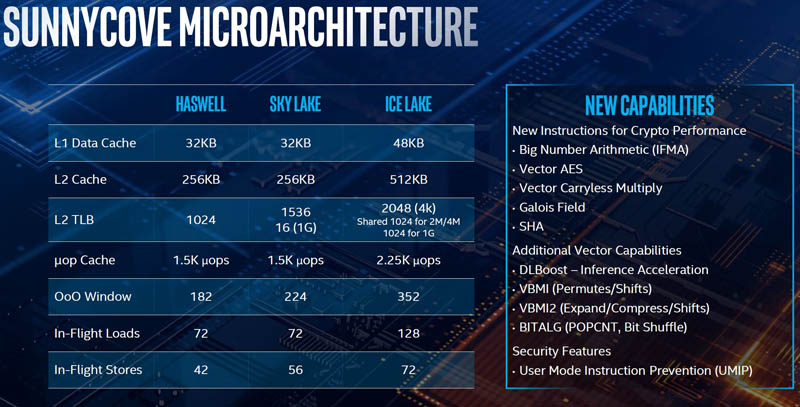
The impact of this is important. Beyond just notebooks, the Intel Xeon E series closely follows the consumer parts. Likewise, the Intel Xeon mainstream Ice Lake 10nm generation with features like more DDR4 channels and PCIe Gen4 is expected in 2020.
Final Words
The work boosting IPC, making integrated Gen11 graphics better, and better integration will have an impact on many of our users. This is what I call “features that make my Dell XPS 13 better.” Beyond that, we will see many of these improvements trickle into the Intel Xeon E line as well as the mainstream server market.
This is not the launch of mainstream high-frequency desktop CPUs. Intel is instead launching another 14nm part for that market. It seems 10nm will be used first for mobile, then move to higher core count chips. We will also note that this week officially starts the clock. During AMD’s Computex 2019 Keynote the company announced PCIe Gen4. We know Rome will have Gen4 and we expect the next-generation integrated graphics chips from AMD will also include PCIe Gen4. Intel is touting this as the first generation that can rival or better AMD’s graphics performance. The CPU battles are heating up.

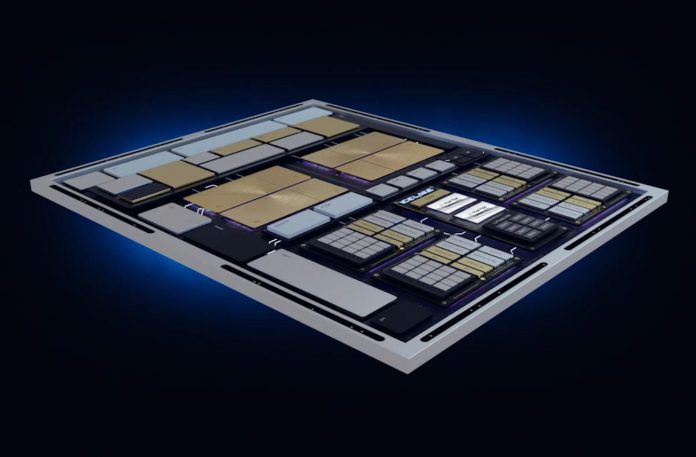
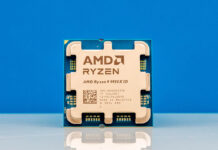


So this offers 16 PCIe3 lanes from the PCH, I’m wondering whether the architecture also supports PCIe4 from the CPU.